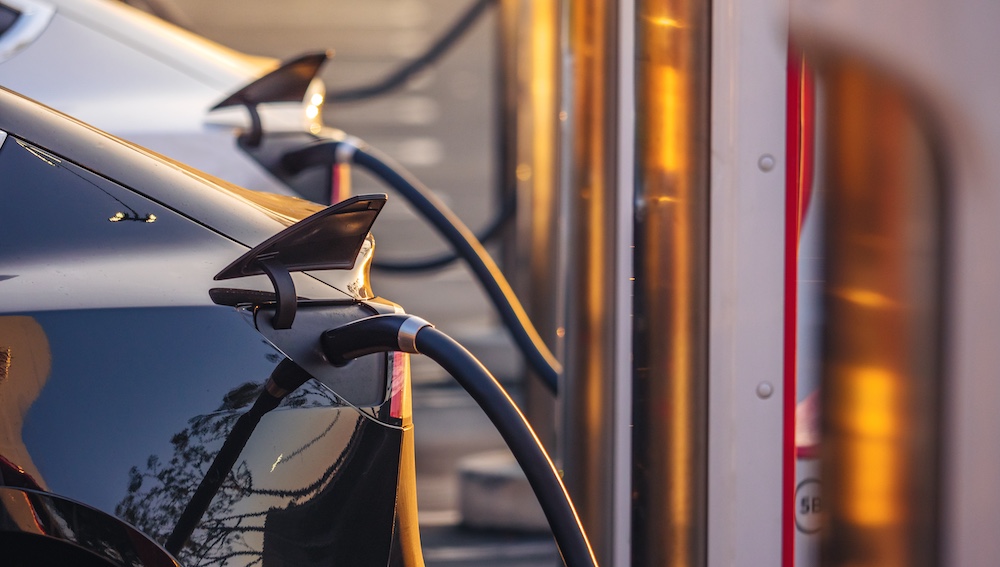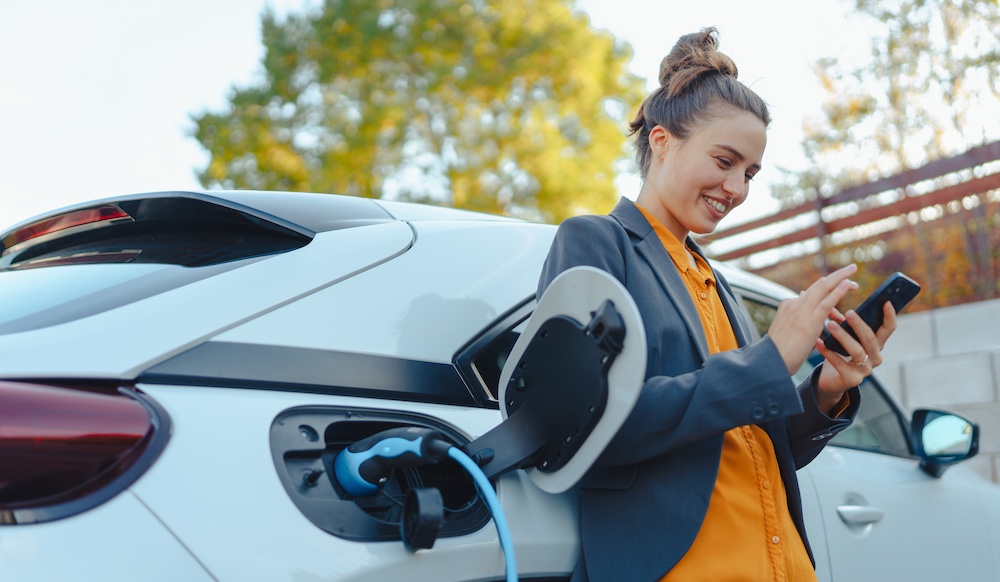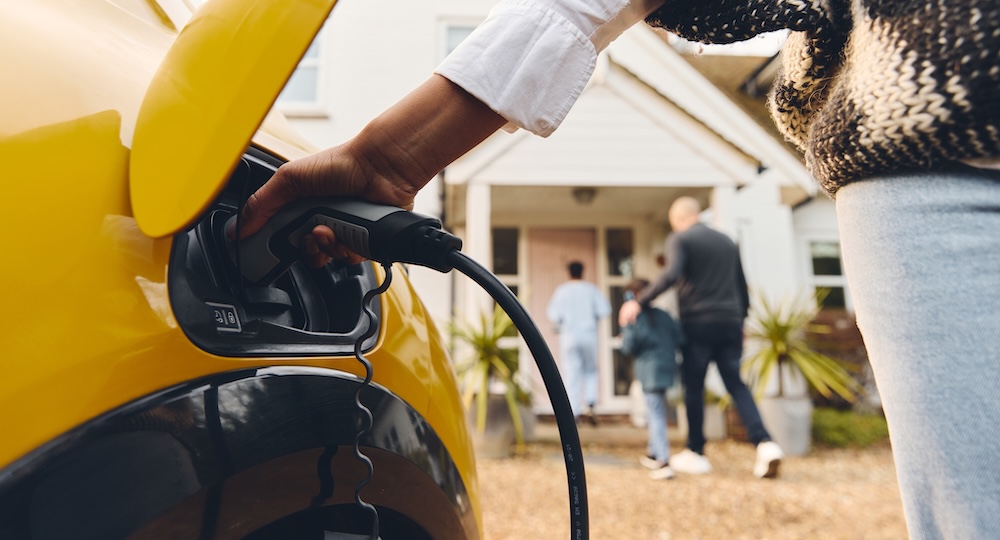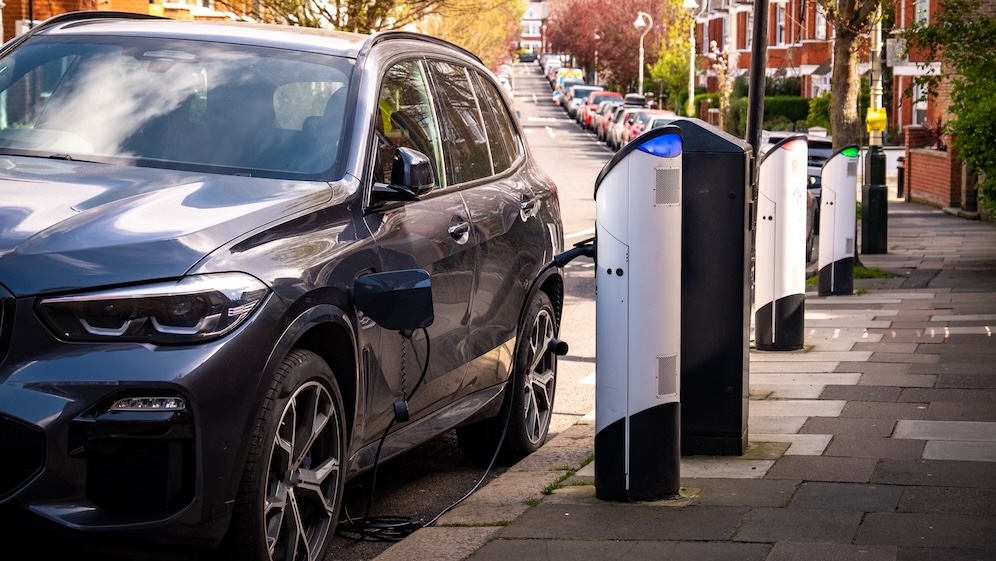ICE vs EV: Performance, costs, and lifespan
The switch from internal combustion engine (ICE) vehicles to electric vehicles (EVs) can feel like a significant change, particularly if you’re unsure what to expect.
This guide sets out the main differences and considerations when it comes to ICE vs EV, including lifespan, performance and running costs - as well as how both compare with hybrid vehicles, helping you make the right decision for you.
EV vs ICE running costs
In our recent survey, 40% of UK drivers said that purchase price/monthly payments was one of their biggest concerns about switching to electric. However, 41% marked lower running costs as a top benefit of an EV vs ICE.
These views reflect the reality. While EVs are generally more expensive to buy, they’re cheaper to maintain overall. Here are some of the main cost considerations when owning an EV compared to a petrol or diesel vehicle.
EV vs ICE purchase price
The specialist materials and manufacturing processes involved in EVs means that the initial purchase price/monthly payments are typically higher than for an ICE equivalent.
However, the price gap is narrowing. In 2025, a new EV costs on average 22% more than a new ICE vehicle, down from 50% in 2020.
Insurance costs
Insuring an EV vs ICE vehicle is currently around £117 more expensive per year, mainly due to the cost of parts and the need for specialist mechanics.
However, as more technicians qualify to work on EVs and components become more widely available, insurance costs are expected to fall, bringing them closer to those of ICE vehicles.
Fueling vs EV charging costs
The cost of charging an EV battery is significantly lower than filling a petrol or diesel car with fuel. On average, charging an EV at home costs 8p per mile compared to 13p-17p per mile to fuel an ICE vehicle. Switching to an EV tariff with your energy provider can reduce this further to as little as 3p per mile.
If you’re likely to be using public charging stations regularly, the cost of charging your EV will be higher than that of home charging, but is still unlikely to exceed the price of petrol or diesel. Current data suggests that charging an EV on the public network costs roughly the same as refuelling an equivalent ICE vehicle.
Servicing and maintenance: EV vs ICE
Servicing and maintenance are generally cheaper for an EV vs ICE vehicle, helping offset higher purchase and insurance costs.
This is largely due to the reduced number of moving parts (roughly 20 in an EV compared to over 2,000 in an ICE vehicle), which lowers the likelihood of faults developing.
EV servicing is also simpler, as tasks such as oil changes are no longer required.
Electric vehicle government incentives
Certain EVs are eligible for government grants applied at the point of sale, reducing the upfront cost.
Depending on your property type, you may also qualify for a government grant of up to £350 to help install a home charging point.
Together, these incentives can further reduce the cost of owning an EV vs an ICE vehicle.
Tax considerations
Since 1 April 2025, all vehicles registered on UK roads are subject to Vehicle Excise Duty (VED), commonly known as road tax. For all new vehicles, you will pay a fixed first year rate based on your vehicle’s CO2 emissions, and then a flat £195 per year thereafter.
For electric vehicles, the first year rate is just £10, with more polluting vehicles paying hundreds or potentially thousands, meaning electric vehicles are currently much cheaper to tax overall.
Pay-per-mile tax
From April 2028, a new tax for EV and hybrid vehicles will be introduced. Vehicles will be charged on a pay-per-mile basis, with electric car drivers owing 3p per mile and hybrid drivers owning 1.5p per mile.
For example, driving 8,000 miles would incur a cost of £240. While this is still significantly lower than the fuel duty paid by petrol and diesel drivers for comparable mileage, it’s important to factor this into your total running costs alongside energy usage.
Driving experience and performance: EV vs ICE comparison
Driving ICE vs EV vehicles can feel quite different due to variations in acceleration, braking and noise. Let’s break this down.
Regenerative braking
One of the biggest differences between driving an EV vs ICE vehicle is the regenerative braking system in electric vehicles. Alongside a conventional braking system, EVs use their electric motor to recover energy when the accelerator is released. This kinetic energy is converted into electricity and stored in the battery, helping maintain a charge.
For drivers used to ICE vehicles, regenerative braking can initially feel unusual, but many find it quickly becomes intuitive and smoother in stop-start traffic.
Acceleration speed
EVs deliver near-instant torque, unlike ICE vehicles that build power gradually. This means that even mid-range EVs can out-accelerate ICE vehicles, delivering a more agile and responsive drive.
Driving noise
Because EVs don’t use combustion engines and have fewer moving parts than ICE vehicles, they offer a much quieter, more refined driving experience.
EV vs ICE range
Range depends on model, battery size and driving style. However, as of 2025 ICE vehicles typically achieve a longer range - around 400 miles per refuel – compared with an EV’s average 300 miles per charge.
That said, several long-range EVs now match 400 miles, and battery technology continues to advance.
Given that the average UK driver travels just 135 miles per week, most EVs easily cover typical driving needs on a single charge.
Owning an EV vs ICE vehicle
Beyond running costs and performance, there are several other factors to consider when deciding between an EV vs ICE vehicle.
EV vs ICE infrastructure
According to our research, 88% of EV owners have access to home charging through a private driveway/garage, or shared parking. Home charging is both cheaper and more convenient than refuelling an ICE vehicle at a petrol station.
If home charging isn’t an option, the number of public charging stations in the UK is rising rapidly – at service stations, supermarkets, and car parks – and confidence among EV owners is high.
More than nine in ten (94%) EV drivers say the public charging infrastructure in their area is good, with 10% using public charging only, due to no access to home charging. Perceptions will likely only increase, thanks to a £6 billion investment from ChargeUK expected to double the number of UK public charging stations between now and 2030.
For long journeys, tools such as Zapmap make it easy to plan routes and locate compatible chargers along the way.
EV vs ICE depreciation rate
All vehicles depreciate in value over time, especially during the first three years. However, EV vs ICE comparisons show a steeper initial depreciation rate for EVs.
This is largely due to rapid advancements in EV technology and the historically lower demand for used EVs.
However, as more electric models enter the market ahead of the UK’s 2035 Zero Emission Vehicle mandate, the used EV market is expected to expand, helping EVs retain value for longer and narrowing the depreciation gap.
EV lifespan vs ICE vehicles
Early EV models were less reliable than ICE vehicles, which shortened their lifespan. However, research shows that EV failure rates decrease by roughly 12% with each new production year.
Today, the EV lifespan vs ICE lifespan is roughly equivalent, with some EVs now exceeding 18 years or 124,000 miles on average – matching or even surpassing petrol vehicles.
Hybrid vehicles: The best of both worlds?
Hybrid vehicles combine an electric battery with an internal combustion engine, offering a middle ground between ICE and EV technology.
Hybrid models range from mild hybrids, which use a small self-charging battery to assist the engine, to full hybrids, which can run on electric power alone, the ICE engine, or a combination of both.
For drivers hesitant about switching from petrol or diesel to EVs, hybrids can provide the reassurance of an ICE while offering some of the performance and cost benefits of EVs.
However, because hybrids include both an engine and a battery they have more mechanical components, potentially increasing servicing and maintenance costs compared with a full EV.
When deciding between a hybrid, EV or ICE vehicle, consider your personal driving habits, charging access and budget to make the most suitable choice.
Conclusion: ICE vs EV
The EV vs ICE comparison comes down to multiple factors, from purchase price/monthly payments, to running costs and lifespan.
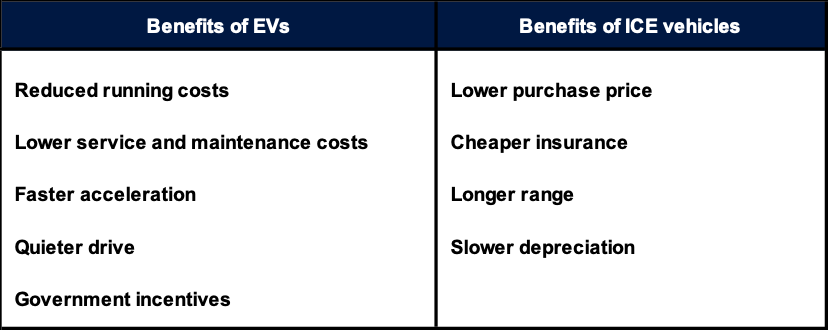
Although EVs often require a higher initial investment, they’re cheaper to run overall thanks to lower running (charging vs. fuelling) and maintenance costs.
EVs also offer a smoother, quieter drive with faster acceleration and regenerative braking, ideal for urban and short-distance travel, while longer-range models increasingly suit longer trips.
If you’re not yet ready to go fully electric, hybrid models offer a practical transition between ICE and EV, as long as you’re comfortable with the additional components within the vehicle.
Find everything you need to know about buying and owning electric vehicles on our EV Hub.
EV vs ICE comparison: FAQs
Is the UK banning ICE cars?
From 2035, manufacturers operating in the UK must ensure that 100% of new cars and vans sold are zero-emission vehicles. You’ll still be able to buy and own used ICE vehicles after that date.
Will EVs replace ICE vehicles?
The UK Government’s Zero Emission Vehicle mandate will increase EV adoption significantly, but ICE vehicles will remain available through the used market for years to come.
ICE vs EV: Which is better?
Both have advantages. However, as infrastructure grows and costs fall, EVs are becoming an increasingly attractive choice for UK drivers seeking lower running costs and environmental benefits.


